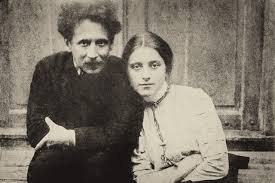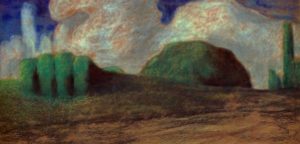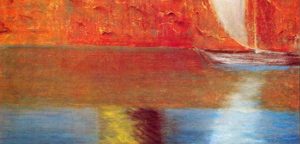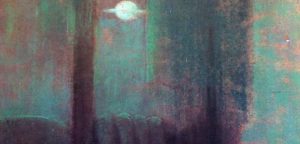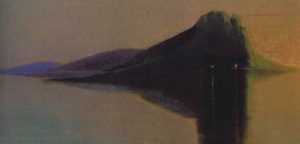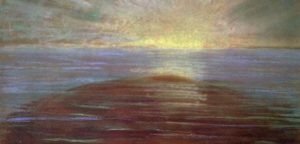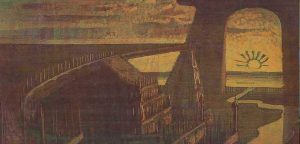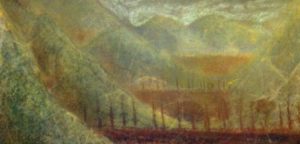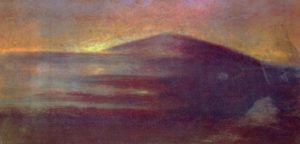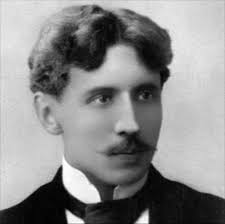He was born on September 22, 1875 in Druskeniky (Oran, Vilnius Province, Russian Empire).
1875 - 1911
Mikalojus Ciurlionis
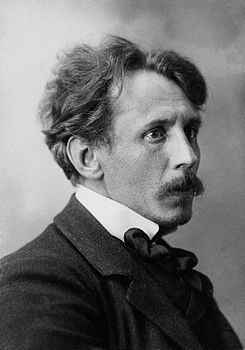
description
Mikalojus Konstantinas Ciurlionis was a Lithuanian artist and a composer, deservedly considered the ancestor of professional Lithuanian music and an outstanding avant-garde painter who broadly widened the boundaries of national and European culture with his versatile creativity and active civil activity.
Born into the Polish-speaking family of a free Lithuanian peasant, who worked as an organist. The mother came from a family of Evangelicals, who emigrated from Regensburg in connection with the persecution of the Catholic Church.
Mikalojus was a member of the Vilnius Art Society and the Union of Russian Artists (URA). One of the oldest (opened in 1921) and large Lithuanian museums in Kaunas was named after M. Ciurlionis and contains most of the preserved paintings.
Key Ideas:
– M. Ciurlionis’ starting point for painting was, as his pictures attest, the visible reality. Right from it, the artist rushes to what the author (and after him the viewer) sees through the things that are beyond reality, in which the symbolic meaning is embedded.
– The picturesque adaptation of contemplated details is built on the principles borrowed from music. The elements of Symbolism are sort of superimposed on the notes-colors, taken from the technique of Art Nouveau. And the shades of decorative or applied folk art, or Japanese quotes, or reminiscences from Egyptian, Indian cultures, sound even “deeper”. Such a unique author’s method came from the experience of synthesizing the picturesque and, not less, musical talents. Even if the author did not name the cycle sonatas, the rhythm of the lines, the harmony of color and light would still lead to “The Sonata of the Sun” and “The Sonata of Spring”, “The Sonata of the Sea” and Sonata of the Stars.
– Another work direction is symbolically generalized themes of paintings that take you to the world of mythology and magic. In cycle “Creation of the World” (1904-1906) and in triptych “Fairy Tale”, the people’s spirit, the history of the formation of the soul are reflected and re-interpreted.
– Cosmogonic and astral myths become that “visibility”, on which the meaning of the cycle “Signs of the Zodiac” and such pictures as “Zemai crosses”, “Peace” are based. And this is, above all, the correlation of space and time, human existence and eternity. Herewith, space is often thought of as something that has absorbed and continues to absorb time and movement. Over time, the passion for the East became more distinct in his works – cycle “Sonata of the Pyramids”, canvas “The Altar” and many others appeared.
– Apart from all that, it is necessary to say about the paintings that clearly demonstrated the increasingly revealing clairvoyance of the artist. Prior to the beginning of the main tragic events (wars, revolutions and again wars), the painter creates such paintings as “Tosca”, “Triptych My Way” (1907), “The Black Flight” (1909). According to B. Lehmann, “he saw too clearly and knew too much,” and one can only guess the “initial horror” that embraced the artist, whose soul was supersensitive.
1875
1889
1902
1904 - 1905
1906
1907
1908
1909
1910
1911
The birth of the artist
Studied in Plunge (Lithuania) at the music school
Studied in Plunge (Lithuania) at the music school of Prince M. Oginski until 1902. He continued his education at the Warsaw Musical Institute and at the Leipzig Conservatory.
He returned from Leipzig to Warsaw, entered the drawing school of Jan Kausik
He returned from Leipzig to Warsaw, entered the drawing school of Jan Kausik.
He continued his artistic education with K. Stabrovsky
Entered the society of mutual aid, directed the choir. He continued his artistic education with K. Stabrovsky. In Warsaw, he exhibited his works for the first time; began the propaganda of the “revival of the Lithuanians”.
His works were exhibited at the exposition in St. Petersburg.
His works were exhibited at the exposition of pupils of the Warsaw Art College in St. Petersburg.
He returned to his homeland
He returned to his homeland in connection with the organization of the first exhibition of Lithuanian fine art in Vilnius, the initiator and participant of which was he himself.
Was invited by Sergei Makovsky to an exhibition in St. Petersburg
Was invited by Sergei Makovsky to an exhibition in St. Petersburg, held with the assistance of M. Dobuzhinsky.
125 paintings of the artist were presented at the exhibition
125 paintings of the artist were presented at the exhibition of the newly created association “World of Art” (St. Petersburg). He married writer Sofia Kimantaite. He took up a large-scale work – a curtain for Ruta society (the work was not approved, and this seriously affected the mental health of its author).
Was sent to the sanatorium Krasny Dvor
Was sent to Pustelniki (Warsaw suburb) to the sanatorium Krasny Dvor (Czerwony Dwór (Polish), now is situated in the city of Marki).
The death of the artist
He passed away on April 10, 1911 in Pustelniki (near Warsaw, then – the Russian Empire, now the city of Marky, Poland).

